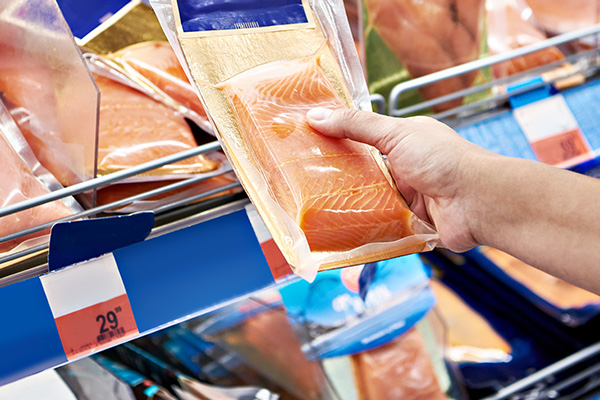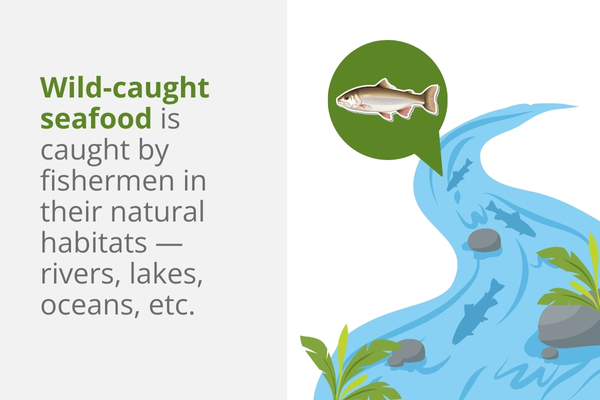March 26, 2024

Seafood is a healthy protein that home chefs love to cook. However, there are many varieties and options to choose from. If you find yourself at your restaurant supply store asking about the differences between farm-raised tilapia and wild-caught salmon, don’t worry. We explain the ins and outs of farmed and wild fish below.
What is Farm-Raised Seafood?
The term farm-raised can be applied to farming fish and shellfish. As the name suggests, farm-raised seafood is commercially cultivated. While it’s easy to picture a typical animal or vegetable farm, a fish or shellfish farm might seem harder to imagine. So, what does a seafood farm look like? Aquacultured fish and shellfish are produced in various environments. Fisheries might section off a portion of ocean, lake, or river, allowing the aquatic organisms to grow in their natural habitat. Similarly, tanks or ponds might be utilized during the life cycle of shellfish like shrimp, oysters, or clams.

Types of Farm-Raised Seafood
The most common seafoods you’ll find farmed are:
- Atlantic Salmon
- Tilapia
- Trout
- Arctic Char
- Oysters
When to Choose Farm-Raised Seafood
If you are sticking to a strict grocery budget, farmed seafood provides a more cost-effective solution to wild-caught seafood, without sacrificing much quality. Plus, if you are working with a specific recipe or prefer a desired flavor, some fish and shellfish will only come from a farm.
What is Wild-Caught Seafood?
Wild-caught fish are harvested directly from their natural habitat. How the seafood is caught depends on the type of environment and fish. Large seine nets, long-lines, and trolling are common wild fishing techniques.

Examples of Wild-Caught Seafood
Most fish and shellfish can be found wild-caught. However, some are synonymous with wild varieties.
- Sockeye Salmon
- Pacific Northwest and Alaskan Salmon
- Atlantic Mackerel
- Sardines
- Pacific Halibut
- Shrimp
When to Choose Wild-Caught Seafood
While farmed seafood has beneficial levels of Omega-3s, wild fish and shellfish have 33 percent moredue to their diet. So, if you want to increase your nutrition intake, wild-caught is an excellent way to enhance your diet. The diversity of fish is another reason to choose wild over farm-raised. Whether you are trying to spice up your meal plan ingredients or just can’t get enough seafood, wild-caught provides myriad fish options.
Is One Seafood Option More Sustainable Than the Other?
Sustainability and ocean safety is a major topic when it comes to fishing practices. Both farmed and wild-caught fish can be harvested sustainably. Farm-raised seafood offers a more consistent supply, which helps reduce wild seafood depletion due to overfishing. Wild fishing practices can also help maintain the overall ecosystem by minimizing some pollution caused by farming.
Farmed and wild-caught seafood each have their benefits. Choosing between the two ultimately depends on your recipes and personal preferences. The bottom line is to research where your fish comes from, regardless of whether it’s farmed or wild. You always want to ensure the seafood is fresh and meets high-quality standards.
Shop Exceptional Seafood and More at US Foods CHEF’STORE
Understanding the nuances of where seafood comes from is key when grocery shopping. Each option has its merits, considerations, and environmental impact. Whether you prioritize sustainability, taste, or nutritional value, being mindful of the source ensures a conscious and delicious seafood experience.
No matter what seafood is on your shopping list, CHEF’STORE has what you want at budget-friendly prices. Browse our high-quality products and plan your next home-cooked meal. Visit one of our many locations or get our exceptional foods delivered directly with our third-party grocery delivery options.